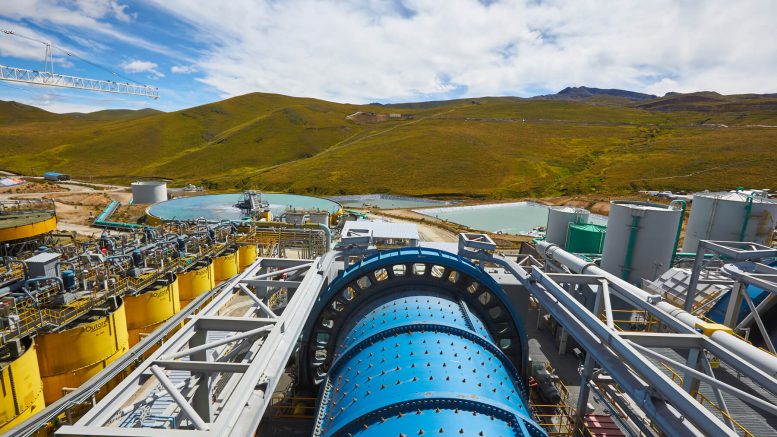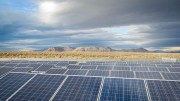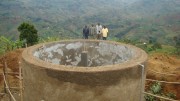Arguably, no one is more aware of the coming copper shortage than copper miners themselves.
Glencore CEO Gary Nagle warned in late 2022 — just months before the company made a play for Teck Resources, whose Quebrada Blanca 2 mine in Chile is one of few recent new copper builds — of a coming “huge copper deficit.”
The world’s largest miner, BHP, estimates the industry might need to spend US$250 billion by 2030 to bring 10 million tonnes of new copper production online, the amount needed in a “plausible upside demand scenario.”
In comparison, it said that last year, only 340,000 tonnes of new production had been formally sanctioned. That’s only 3.4% of the total that may be needed.
So why, then, are copper producers not building more new mines?
The simple fact is that capital costs have increased but copper prices aren’t high enough to compensate. That’s made M&A the smarter path, as evidenced by BHP’s takeover of Oz Minerals, Rio Tinto’s purchase of Turquoise Hill Resources, and here at home, Hudbay Minerals’ acquisition of Copper Mountain Mining.
Hudbay’s last build, its Constancia copper mine in Peru completed in 2014, illustrates the scale of cost increases over the past decade.
“The capital intensity of Constancia is about half of the capital intensity of new projects that have been recently completed or on the verge of being completed,” Candace Brule, the company’s vice-president of investor relations, said at a recent critical minerals panel in Toronto organized by Marsh, a big player in risk management and mining insurance.
“We look at that metric and we determined that it was actually cheaper to go out and buy existing production than it was to take those risks to sanction a new project.”
Long-term thinking
Rising costs and commodity prices that aren’t high enough to justify new production are only part of the problem.
Miners naturally think long-term. The biggest, like BHP, evaluate projects over 50 and 100-year time frames.
Investors, on the other hand, are less patient.
At the Prospectors and Developers Association of Canada convention in March, mining luminary Pierre Lassonde quipped that while portfolio managers expect quick returns, “in our business, instant gratification is like 10 years.”
Recalling a recent conversation with a BHP executive, Lassonde noted that while the company’s bar to invest in projects is a relatively modest 12-15% rate of return, over a 50-year period that climbs to 28%.
“These are the large copper mines that essentially catch two or three cycles in the metal and each time there’s a cycle, they can deliver a huge rate of return,” Lassonde said.
If there’s hope to get more parties outside of miners to think long-term on metals, it lies in the energy transition, which has governments rediscovering the importance of mining and entire supply chains to their future economies.
Unfortunately, incentive schemes like the United States’ 2022 Inflation Reduction Act (IRA) stimulate investment in the wrong end of the value chain, Paul Mitchell, EY’s global mining & metals leader, said during the Marsh panel.
“The IRA is incentivizing production of hydrogen and manufacturing of batteries. Neither of those things can happen without minerals,” Mitchell said. “The government policies need to either reduce the cost of production or reduce the capital intensity of building a mine.”
We haven’t seen policies that address that yet.
The good news is that banks seem to be warming up to mining.
“In the last three or four years, there’s been a massive change,” Enrique Rico, global head of structured trade at Spanish bank Santander, told the Marsh panel. Only three or four years ago, the bank’s risk committee would dismiss mining transactions as “crazy,” he noted.
Contrast that with the bank’s risk committee approving financing in February for a lithium mine in the Americas, which was celebrated with clapping.
“There’s an absolute huge difference in the appetite of the bank,” he said.
More clapping could be on the way, if the coming copper crunch is as bad as the miners themselves expect.
TNM news
This month, we’ve also got some TNM specific news to announce.
First, in this issue, you’ll notice a brand new section, Eye on Australia. Canada and Australia have always been mining rivals, but the Aussie market of late has shown much more strength – for reasons we’ve discussed before in these pages. Canada has also benefited from Aussie expertise as a flood of talent and Oz-headed companies have moved north in recent years. Keep watching this section, spearheaded by our Western Editor Henry Lazenby, as we expect to see it grow under his watch.
And our big congrats to Colin McClelland, previously a senior staff writer, who has been promoted to managing editor of The Northern Miner. This is a new position in recognition of the first-rate work Colin has done since he joined us in September 2022. His insightful features often grace our front page, and his work consistently tops the most-read stories on our website. He’s also a master of the site visit video and was an essential contributor to the redesign of the paper last fall and on digital strategy.
As always, please feel free to reach out to any member of our team with questions, feedback, or story ideas.






Be the first to comment on "Explaining the copper conundrum"